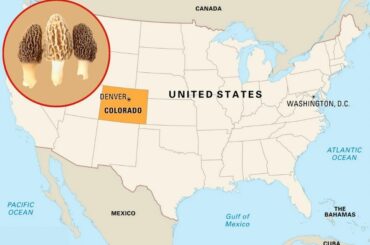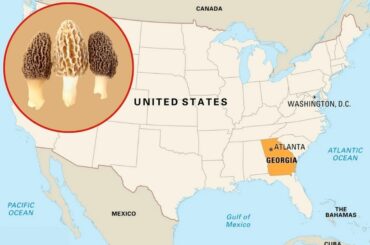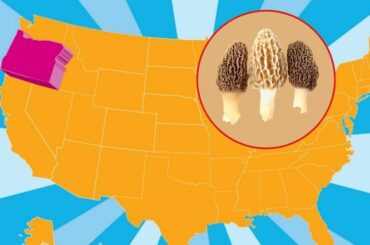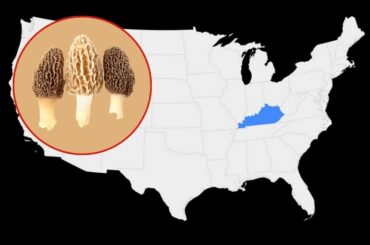I found this weird-looking stinky thing in my garden and wanted to know more. As I found out it is a fungus and known as stinkhorn fungus. They are scientifically known as Clathrus crispus and it is a species of fungus which belongs to the genus Clathrus. They are also known as Red cage fungus or the heart of the earth. They were first identified in 1820 in the Americas and it is a saprobic fungus that decomposes dead organic matter to generate the energy they need to survive. So let me share some details I found about this weird mushroom.
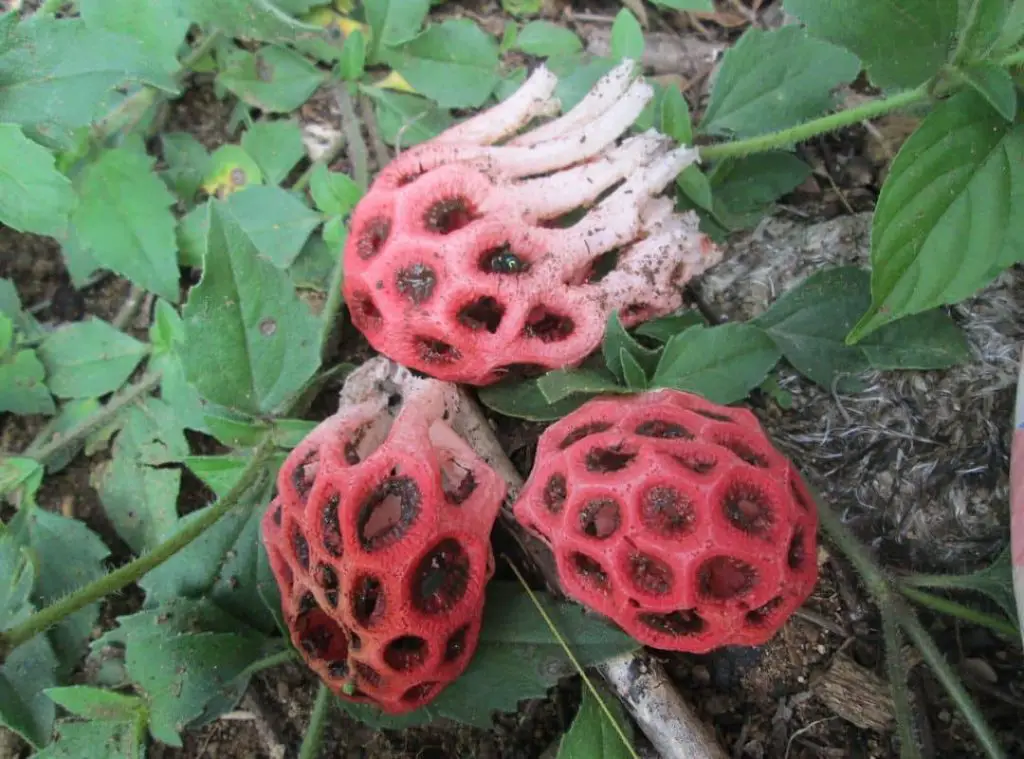
What is Clathrus crispus?
Contents
- 1 What is Clathrus crispus?
- 2 How can you identify the Clathrus crispus?
- 3 What size is Clathrus crispus?
- 4 Where can we find Clathrus crispus?
- 5 When does Clathrus crispus grow?
- 6 Is Clathrus crispus poisonous?
- 7 Clathrus crispus edible?
- 8 The legal status of Clathrus crispus
- 9 Are there clathrus crispus look-alikes
- 10 Conclusion
The fruiting bodies of this mushroom growing on the substrate solitary or in groups. The fruiting bodies when mature emit a very distinct fetid smell similar to old cheese. The smell and the peculiar appearance of the fruiting bodies give Clathrus crispus, its common name. The fruiting bodies of this mushroom are red, fading to pinkish or pinkish-orange in color on the outside with a growing amber on the inside. The mature fungus looks like a cage composed of varying sizes of holes encasing a green-colored amber inside.
The fungus, at young stages, is grown inside an egg-like structure. The egg-like structure will eventually hatch and reveal the red cage. This process may only take a few hours. Inside the fruiting body, encased by the red-colored cage is the gleba. The gleba is where the Clathrus crispus produces its spores. The gleba is rich in calcium which protects the fruiting body during development.
Calcium ion acts as a stabilizer to the polysaccharide gel which protects the embryonic fruiting body from drying out during the growth of the egg. The egg of the Clathrus crispus is also composed of a gelatinous layer that consists of potassium, calcium, manganese, and iron. Potassium helps the gelatinous layer to keep the osmotic balance. High concentrations of these elements support the healthy and rapid growth of the receptacle, suggesting that the gelatinous layer in the egg acts as a placenta that provides nutrients and elements to the receptacle during the young stages.

How can you identify the Clathrus crispus?
Cap
The fruiting body of this mushroom is round or roughly elliptical. The fungus grows to a size of 10 by 15 cm. The fruiting body at maturity looks like a cage composed of holes in different sizes and shapes. This cage enclosed the olive-colored gleba. The arms of the cage are scarlet-red in color on its upper parts, but lighter near the base where it is covered by the volva. There can be up to about 50 holes in the fruit body, which can be shaped polyhedral to spherical near the top.
Near the base, the arms become more elongated. The elongated arms near the base meet each other to form a structure of an inverted cone. The arms are sponge in texture and grow up to 1 cm in width. The young stage of Clathrus crispus looks like an egg on the substrate. The color is whitish to gray. The egg encloses the fruiting body. The white outer layer is thin and fragile. When this layer ruptures to reveal the fruiting body, the remains of the egg cover the base of the fungus and are called the volva.
Gills
Clathrus crispus does not have gills as in most edible mushrooms. The fruiting body of Clathrus crispus is a complex lattice or a cage. The inner side of the arms which forms the cage has a layer of olive-green spore-bearing slime called the gleba. The gleba has basidia bearing six to eight narrowly elliptical spores covered with mucus. At maturity, the gleba auto digests itself and the spores are mixed in a foul-smelling, gelatinous, greenish mucus. The gleba, after auto digestion, emits an extremely foul smell that attracts flies.
The flies feed on the gleba and spread the spores onto other areas. The flies are needed to carry the spores around as the spores are formed in the gleba and cannot be carried by the wind. The life cycle of this mushroom fruit body is very short and this process only takes 1-2 days.
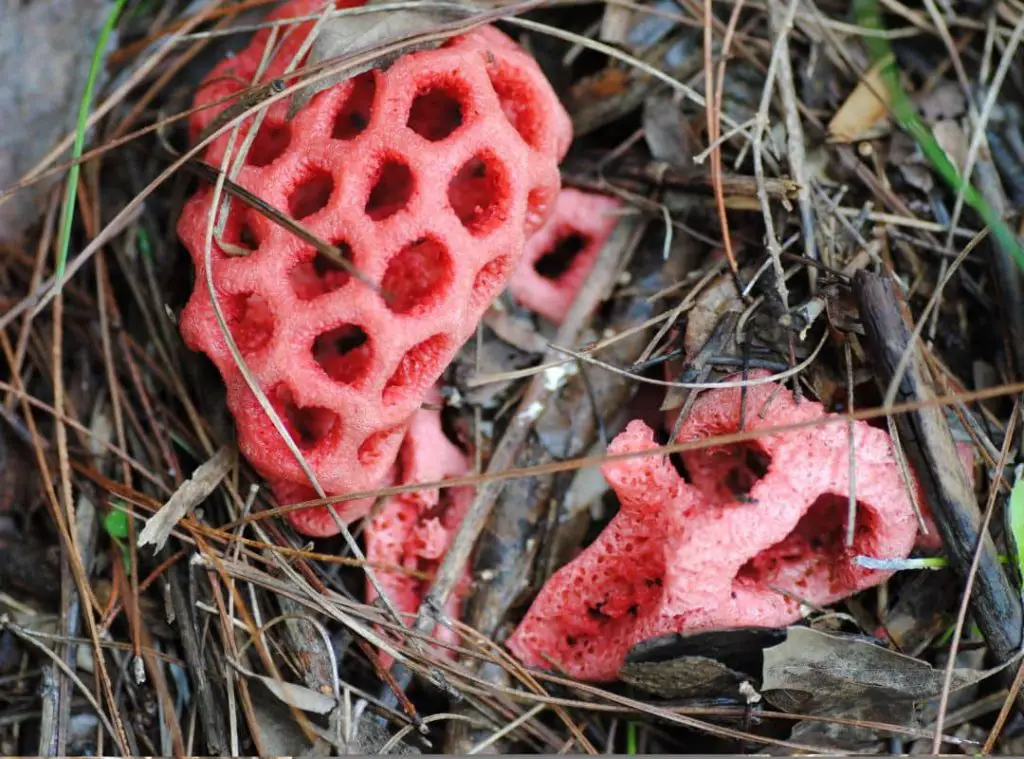
Stem
Clathrus crispus does not have an identifiable stem. Sometimes the elongated arms near the base of the fungus may look like supporting stems. But those are only parts of the fruiting body itself. The fruiting body of Clathrus crispus connects with the substrate by rhizomorphs covered by the volva. The volva is the whitish sac that covers the fruiting body at younger stages. The remains of this sac lie at the base of the fruiting body.
Spore print
The spores of Clathrus crispus occur in the matrix called the gleba. The gleba is olive to greenish and slimy and coats the inner side of the cage holes. Spores are elliptical to cylindrical, slightly greenish in color, and 3.8–4.2 by 1.8–2.2 µm in size.
Microscopic features
Spores are cylindric, smooth and 3–4 x 1.5–2 µm in size. Sphaerocysts of the branches are irregular, smooth and 14–37 µm across. The walls are 0.5–1 µm in thickness. Hyphae in the volva are 2–4 µm in width.
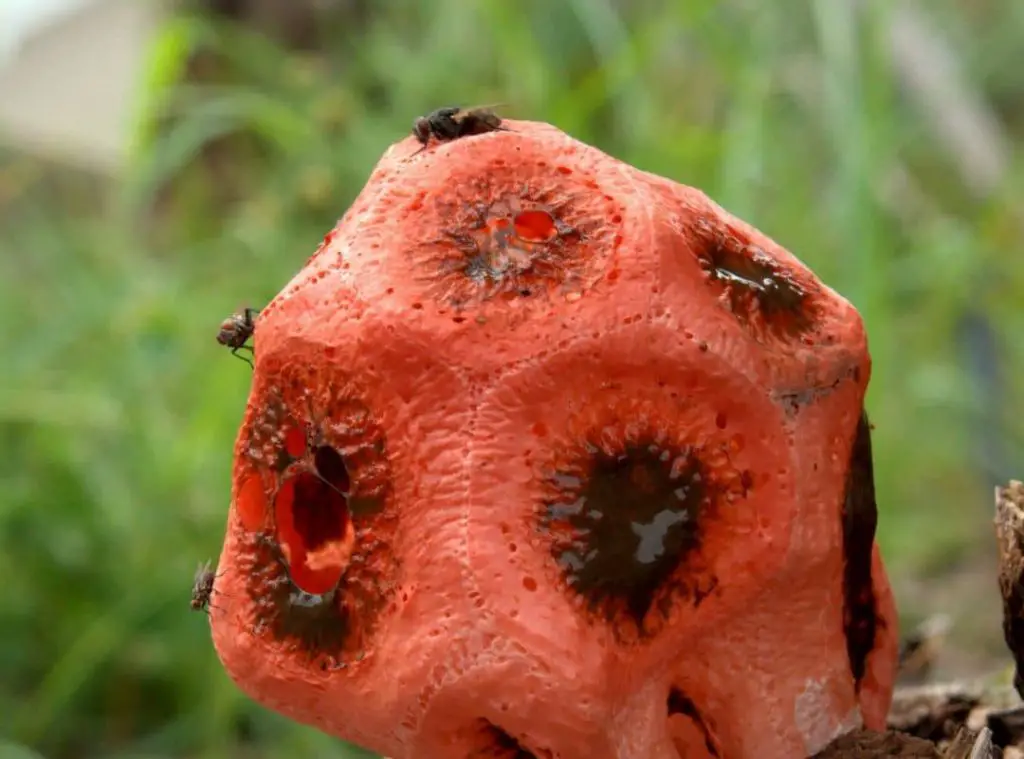
What size is Clathrus crispus?
The Immature Fruiting Body is whitish to faintly brownish and shaped like an egg. The egg is 3 to 5 cm in height. The Mature Fruiting Body which is the red-colored cage-like structure is 5–12 cm high; 4–8 cm wide. The arms which make the cage are up to about 1 cm thick. These are hollow and spongy in texture. The arms are grooved between meshes.
Where can we find Clathrus crispus?
Clathrus crispus is a saprobic fungus. Therefore can be found growing on dead organic matter. They are found in flocks or loosely organized communities growing on the ground. The substrate is mostly topsoil, humus, and decomposing leaves or mulch. The Clathrus crispus species is recorded from the USA, Mexico, West Indies (Cuba, Hispaniola, Jamaica, Puerto Rico), Central and South America Uruguay, and northern Argentina.
When does Clathrus crispus grow?
Clathrus crispus can appear a few times a year. The season normally starts in June and ends in November.
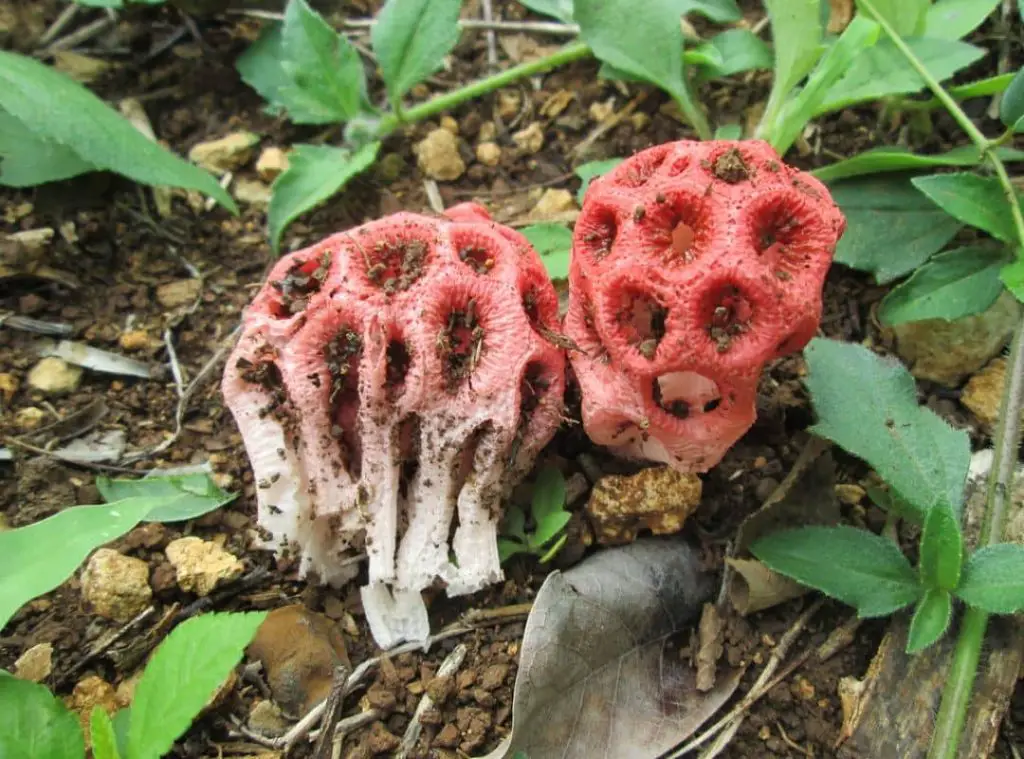
Is Clathrus crispus poisonous?
Clathrus crispus is known to be inedible and in some cases poisonous. But the egg stage of Clathrus crispus is considered edible and even considered a delicacy in some parts of the world.
But it is known to absorb and bioaccumulate manganese from the substrate similar to other species from the stinkhorn family. The bioaccumulated manganese aids the enzymatic breakdown of the gleba. This breakdown produces foul-smelling substances such as; dimethyl sulfide, aldehydes, and amines. These are produced as a result of the enzymatic decarboxylation of keto acids and amino acids.
Clathrus crispus edible?
Clathrus crispus is generally known to be inedible. But the egg stage of the mushroom is considered edible in some parts of the world. The fungus is grown in an egg-like structure and eventually hatch and opens up into the world which may only take a few hours. Before hatching the mushroom is edible but not a popular choice by many. During the egg stage, the foul smell is slightly bearable. After the fungus hatches from its shell, this lattice-shaped fungus will start to decay.
This process draws in flies who will eat the slime on the inside of the mushroom that has a fetid smell of old cheese and in turn, will spread the spores of the mushroom to grow elsewhere.
The legal status of Clathrus crispus
There is no information found on the legal status of Clathrus crispus. It is not recognized as a prohibited variety of mushrooms.
Are there clathrus crispus look-alikes
Most species in the stinkhorn family look more or less similar to each other. But Clathrus ruber, Clathrus chrysomycelinus and Clathrus columnatus can look similar to Clathrus crispus, the most. But you can still distinguish between species based on a few differences. In Clathrus crispus, corrugated rims which are present in the branches of the fruiting body are absent. In contrast, the fruiting body of Clathrus ruber tends to be wider and orange, and its arms usually develop flattened outer edges.
The two species can also be separated, under the microscope, by the size of their spores. Clathrus chrysomycelinus in contrast has a yellow receptacle and its gleba is concentrated on glebifers at the lattice intersections. Clathrus columnatus has a fruiting body with two to five long vertical orange or red spongy columns joined at the apex instead of a complex lattice.
Conclusion
Clathrus crispus belongs to a group of fungi that are popularly known as stinkhorn fungi. As the name suggests, the fruiting body of Clathrus crispus emits a foul smell similar to old cheese. The smell is mainly due to the compounds formed in the gleba.
The gleba is the spore-bearing slimy substance that forms on the inner side of the cage forming arms. The fruiting body of Clathrus crispus is red in color and formed by branches shaped like a mesh in a round or oval shape. During the young stages the fruiting body is covered by a thin whitish layer and looks similar to an egg.
Clathrus crispus is not popularly known as an edible species. But the younger stage called the egg is considered a delicacy in some parts of the world. This variety of fungi is not considered poisonous. Clathrus crispus blooms several times a year and is found mostly in the Americas. Clathrus crispus grows well in dead organic matter such as dead leaves, topsoil, and humus and even on mulch. The appearance of this fungus is frowned upon in home gardens due to its putrid smell.
Read Next : Clathrus Ruber | Unreal Red Cage Mushroom |

